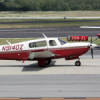A/C veers left *more* upon rotation
-
Members Online
- sfmse
- Scott Ashton
- Bartman
- phxcobraz
- 1980Mooney
- Rwsavory
- larryb
- Crawfish
- Tom F
- Mufflerbearing
- breenalan
- wombat
- eman1200
- Tmack201
- TCC
- atpdave
- MikeOH
- hammdo
- Steve Dawson
- M20E for me
- N201MKTurbo
- Rick Junkin
- jeff.reynoljm
- KLRDMD
- mooniac58
- Lax291
- redbaron1982
- PT20J
- DonMuncy
- jeremyc209
- Ron McBride
- Lee G.
- ad5ut
- Marc_B
- Parker_Woodruff
- Hank
- lanejacobs84


Recommended Posts